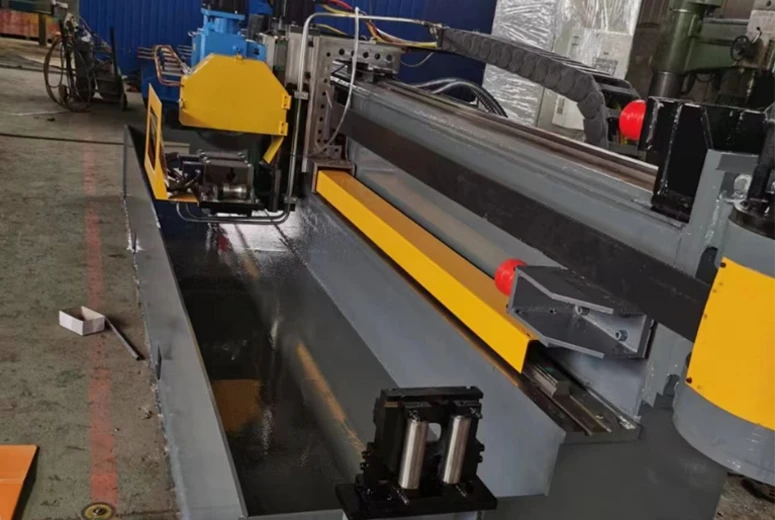Efficient Techniques for Cutting Square Pipes in Metalworking and Construction
Square Pipe Cutting Techniques and Applications
Square pipe cutting is a crucial process in various industries, including construction, manufacturing, and fabrication. The ability to accurately cut square pipes to specific lengths and angles can significantly enhance productivity, quality, and cost-effectiveness in a project. This article delves into the techniques, tools, and applications of square pipe cutting, highlighting its importance in modern industry.
Techniques of Square Pipe Cutting
There are several techniques for cutting square pipes, each with its own advantages and applications. The most common methods include
1. Manual Cutting This traditional method involves using tools like hacksaws or pipe cutters. While manual cutting is cost-effective for small projects or limited quantities, it requires skill and can be time-consuming. Moreover, achieving precise cuts can be challenging, especially for longer pipes.
2. Mechanical Cutting This technique employs machines such as band saws and circular saws. Mechanical cutting offers greater precision and speed compared to manual methods. Band saws, in particular, are popular for their ability to handle various pipe sizes and wall thicknesses, making them versatile tools in a fabrication shop.
3. Plasma Cutting For thicker materials, plasma cutting is often chosen. This technique uses a high-energy plasma arc to slice through metal with great precision. Plasma cutters are excellent for intricate designs and can be computer-controlled for automated cutting, reducing human error and increasing efficiency.
4. Laser Cutting As one of the most advanced cutting techniques, laser cutting provides exceptional accuracy and repeatability. It uses highly focused laser beams to melt or vaporize the material, creating clean and precise cuts. This method is ideal for complex shapes and detailed designs, though it can be more expensive than other cutting methods.
5. Waterjet Cutting Waterjet cutting uses a high-pressure stream of water mixed with abrasive particles to cut through materials. This method is suitable for a wide range of materials, including metals, plastics, and composites. It produces minimal heat-affected zones, making it ideal for delicate or heat-sensitive projects.
square pipe cutting

Applications of Square Pipe Cutting
The applications of square pipe cutting are vast and varied, playing a significant role in many sectors
1. Construction Square pipes are often used in structural frameworks, handrails, and supports. Accurate cutting ensures that each piece fits together seamlessly, contributing to the overall integrity and safety of buildings.
2. Manufacturing In the manufacturing sector, square pipes are utilized in conveyor systems, machinery, and equipment frames. Precise cutting allows for better assembly and operational efficiency.
3. Furniture Design Many modern furniture pieces utilize square pipes for their frames and bases. Designers rely on accurate cutting to create visually appealing and functional designs.
4. Automotive Industry Square pipes are used in various automotive applications, such as chassis and structural components. The cutting techniques employed here must ensure that safety and performance standards are met.
5. Art and Sculptures Artists and sculptors also use square pipes to create unique installations and sculptures. The versatility of cutting methods allows artists to express their creativity while ensuring structural stability.
Conclusion
Square pipe cutting is an essential process that supports a wide range of industries. By employing various techniques, from manual methods to advanced laser cutting, manufacturers and fabricators can achieve the precision and efficiency required for their projects. As technology continues to evolve, the methods of cutting square pipes will undoubtedly advance, leading to improved accuracy and new possibilities in design and application. Understanding these techniques and their applications is crucial for anyone involved in industries that utilize square pipes.
-
High Frequency Straight Seam Welded Pipe Production Line-BzZhou Xinghua Machinery Equipment Manufacturing Co., LTD.|Precision Welding, High EfficiencyNewsJul.30,2025
-
High Frequency Straight Seam Welded Pipe Production Line|BzZhou Xinghua|Precision Welding&EfficiencyNewsJul.30,2025
-
High Frequency Straight Seam Welded Pipe Production Line - BzZhou Xinghua|Precision Engineering&EfficiencyNewsJul.30,2025
-
High-Frequency Straight Seam Welded Pipe Production Line-BzZhou Xinghua Machinery Equipment Manufacturing Co., LTD.NewsJul.30,2025
-
High-Frequency Straight Seam Welded Pipe Production Line-BzZhou Xinghua Machinery Equipment Manufacturing Co., LTD.|Precision Manufacturing, High EfficiencyNewsJul.30,2025
-
High Frequency Straight Seam Welded Pipe Production Line-BzZhou Xinghua Machinery Equipment Manufacturing Co., LTD.|Precision Steel Pipe Manufacturing&Industrial EfficiencyNewsJul.29,2025


